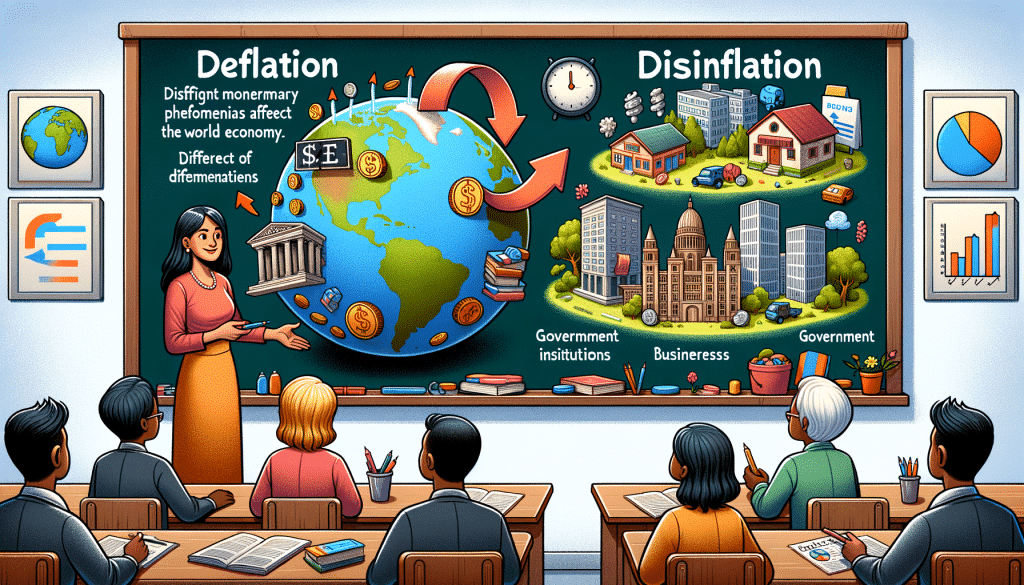Deflation vs Disinflation

In the world of economics, terms such as deflation and disinflation are common parlance. They describe distinct monetary phenomena with significant implications for consumers, businesses, and governments alike. This article will delve into the respective meanings of “Deflation” and “Disinflation,” highlighting their differences and impacts.
Understanding Deflation
Deflation is an economic scenario characterised by a general decline in the prices of goods and services in an economy over a period. This phenomenon is often associated with the contraction in the supply of money or credit and can be the result of reduced demand for goods and services. While deflation may seem beneficial on the surface, it can have detrimental effects on an economy.
The Impact of Deflation
Deflation can lead to an economic downturn. As prices fall, businesses’ revenues decrease, leading to cost-cutting measures such as layoffs or reduced production. This can create a vicious cycle—decreased spending power leads to less consumption, causing further deflation. At the same time, the real value of debt increases, putting strain on borrowers and potentially leading to higher default rates.
Defining Disinflation
In contrast to deflation, disinflation refers to a slowdown in the rate of inflation. In other words, it’s when the inflation rate is still positive, but decreasing. This means that while the prices of goods and services continue to rise, they do so at a slower pace.
Disinflation’s Effect on the Economy
Unlike deflation, disinflation doesn’t typically signal an economic slump. Instead, it generally suggests that the economy is being well-managed. Lower inflation rates can increase purchasing power for consumers and control costs for businesses. However, prolonged disinflation can be a precursor to deflation, which, as we’ve discussed, can lead to economic difficulties.
Deflation vs Disinflation: The Key Differences
The main difference between deflation and disinflation lies in their impact on the economy. Deflation is often linked to economic downturns, while disinflation is generally considered a sign of a well-managed economy. In deflation, prices are decreasing, whereas in disinflation, prices are increasing at a slower rate. Understanding these differences is crucial for both policy-making and personal financial planning.
Conclusion
In conclusion, though alike in sound, deflation and disinflation represent different economic states. Understanding these can help make wise financial choices and predict economic trends. Balancing inflation without slipping into deflation is vital for a strong economy.
Remember, while “Deflation vs Disinflation” may seem like economic jargon, these concepts play a crucial role in shaping both global and local economies.

